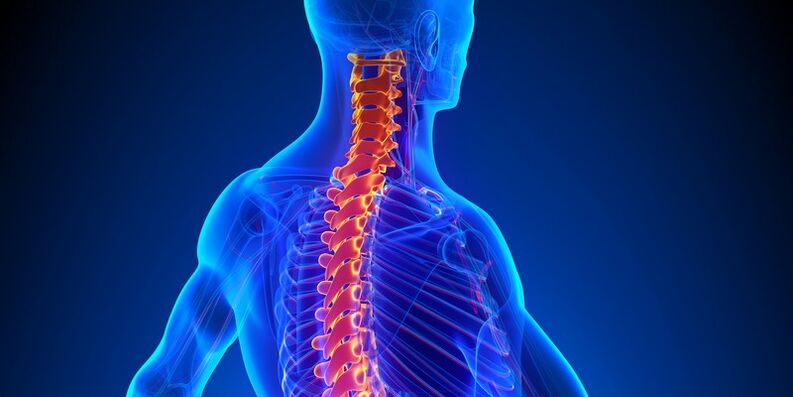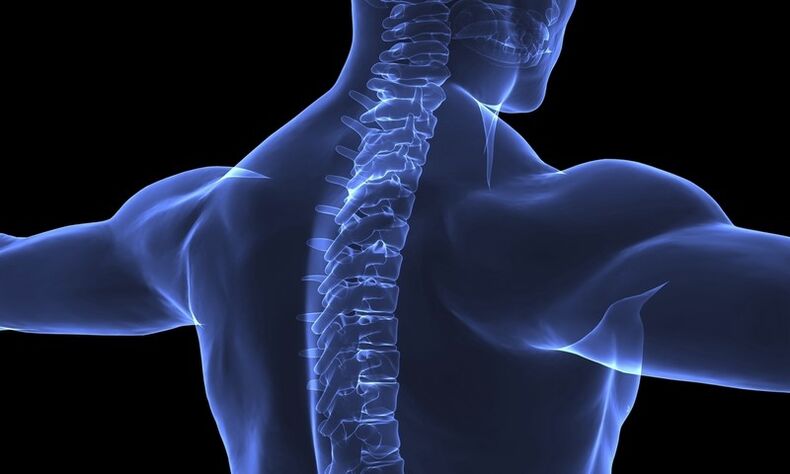If you are worried about neck pain, and you have not yet gone to the doctor, you need to find out what is the danger of cervical osteochondrosis, what fatal consequences it can lead to. Awareness of danger must motivate you to action.
Cervical osteochondrosis is considered one of the most dangerous lesions of the spine, as a huge number of vessels and vital arteries and capillaries are concentrated in the neck area. Therefore, among the unpleasant consequences of this disease is vegetative-vascular dystonia, hypertension, oxygen starvation, etc.
Cervical osteochondrosis cannot go unnoticed, because in most cases it is accompanied by severe pain, vivid symptoms. Pain syndrome is an indicator that the work of the whole organism is disturbed. If you ignore these signs, the result can be catastrophic, ranging from irreversible damage to the spine to death.

After reviewing the data below, you will see that the consequences of cervical osteochondrosis are really serious, which means that in no case should you delay full-fledged complex treatment.
General clinical picture
Injuries to the cervical spine mainly affect its lower segments, which is related to physiological characteristics and lifestyle. If you feel pain in the neck, shoulders, head, it indicates degenerative changes in this area, pinched nerve, muscle cramps or compression of the vertebral artery.
Cervical osteochondrosis affects the segments of the spine responsible for the functioning of the shoulder and elbow joints, thyroid gland, hands, esophagus and trachea. The most common symptoms include pain in these parts of the body, hypothyroidism, seizures, numbness of the face and hands, cough and difficulty swallowing.
At the very beginning of the disease there are complaints of constant headaches, fatigue, hearing and vision impairment, dizziness, fainting. Of course, in parallel, there is always a sharp or pulling pain in the neck and shoulders. At this stage of the disease it is important to visit a doctor, make a diagnosis and begin the course of treatment, which includes taking special medications and physiotherapy, manual therapy of osteochondrosis of the cervical spine.
Otherwise, the disease will move to the next level, complications of cervical osteochondrosis will begin, which is very difficult, if not impossible, to overcome.
Spinal lesions
If the spinal discs in the spinal column are pinched by a nerve at any point, then a hernia and bulge occurs. These pathologies are chronic, sometimes worsening and then disappearing.If the attacks of sharp pain pass and do not bother even a few weeks, it does not mean that the disease has receded and that everything passes by itself. "By itself" can not pass, the treatment of protrusions, and then hernia, requires complex treatment for several months or even years.
Herniated discs currently involve the growth of vertebral bones, salt deposition, and sclerotic deposits in blood vessels. In addition, the danger comes from transferred vertebrae, which cannot fully transport oxygen and nutrients to the brain, inner ear, and upper spinal cord. Oxygen starvation occurs, leading to dizziness, loss of consciousness, and constant fatigue. The pituitary gland suffers, there are disturbances in the work of the hypothalamus, the process of breathing and swallowing becomes difficult.
The work of the heart becomes heavy, it begins to work faster, increasing the rhythm, the blood pressure automatically increases, and this in turn affects the blood vessels.
Injuries of the vegetative-vascular system
Medicines - analgesics, antispasmodics, painkillers, etc. - without parallel physical activity, therapeutic massage will relieve pain and other symptoms, but only for a short time.The body will quickly get used to the active substances, stop reacting to them, the disease will return, and the symptoms will occasionally intensify.

This threatens vegetative-vascular dystonia - which is most dangerous for osteochondrosis of the cervical spine. As a result of compression of the vertebral artery, which provides a third of the nutrition of the brain and other vital organs, the whole body suffers.
By the way, many doctors do not consider vegetative-vascular dystonia an independent disease. Experts are sure that this is only a consequence of violating other systems. And osteochondrosis of the cervical spine is often the main "provocateur" of cardiovascular problems.
First of all, the vasomotor center suffers, which is responsible for the regulation of vital functions, heart function and normal blood pressure. As a result of the lack of normal blood circulation in the upper parts of the body, the person feels numbness in the hands, notices difficulty breathing and swallowing. Deterioration of motor skills, possible disorientation in space, frequent fainting, "cottoniness" in the head.
Due to poor blood flow, the heart tries to make up for the "deficiency, " so it starts working faster and faster.As a result, blood pressure rises, the heart speeds up and tachycardia begins.After some time of such accelerated work, the heart muscle stretches.
Compression of blood vessels and the spread of complications to the spine along the neck causes dysfunction of many internal organs. The adrenal glands are overloaded and release the hormone cortisol above normal.
Over time, the disease will progress. Tachycardia, nervous disorders, as well as hypertension and hypotension will bother a person who has initiated cervical osteochondrosis.
Hypertension and hypotension
Another dangerous thing about cervical osteochondrosis is causing hypertension, one of the most terrible diseases. Initially, the person goes completely unnoticed, with no visible symptoms. Unfortunately, neck pain is rarely associated with hypertension. Without proper treatment, it can develop into coronary heart disease, cause myocardial infarction and cause stroke. As you know, mortality caused by cardiovascular disease ranks first in the world.
As for hypotension, it is not able to directly take the life of the patient, but it entails extremely unpleasant symptoms.
Hypotension is oxygen starvation caused by inadequate nutrition of the brain, cerebellum and inner ear. Due to the fact that the brain receives little oxygen and other nutrients, it cannot ensure the full functioning of the body.The person lacks vital energy, feels weakness, chronic fatigue, nausea attacks, drowsiness.Of course, he is constantly in a bad mood, his performance is declining. In the long run, there is a deterioration of memory, vision and hearing, loss of concentration.
One of the most striking consequences of cervical osteochondrosis and the caused hypotension is the so-called drop syndrome - unexpected fainting, and one of the most common - headaches and disorders of the nervous system.
Headaches and nervous system disorders
What if you don’t have the flu, acute respiratory infections, blood pressure is normal, but you still suffer from constant headaches? It is quite possible that these are the consequences of cervical osteochondrosis. Nerves are pinched, blood vessels are pinched, blood is not brought to the brain in the required quantities, the result is pain and dizziness, pulsation in the temples, pressure in the occipital region.
In such a state, it is difficult to continue to do your job well, be in a good mood, concentrate and play sports. If you prefer to swallow pills from the head, painkillers, and not go to the doctor and do a complete examination, you risk starting the disease and creating serious disorders in all body systems, including the nervous system.
Depression, panic, apathy, irritability, aggression - all these are indicators of dysfunction of the human nervous system.
If the disease has passed into later stages, restricts your movement, limits your life activity, causes constant pain, and you have endured all this time, then the appearance of neurosis is a completely natural symptom. In addition, if cervical osteochondrosis is not treated, certain syndromes associated with dysfunction of certain organs may develop.
Syndromes
Osteochondrosis of the cervical spine can lead to the following unpleasant syndromes:
- Vestibular tree syndrome - spoils a person's life and causes a huge amount of discomfort. The main symptoms include disorientation in space, hearing and vision loss, and fainting. The arms may be inadvertently clenched, weakness in the legs will occur.
- Due to the fact that the vestibular apparatus cannot function normally, cochlear syndrome can appear - it will create noise in the ears, darken in the eyes.
- Sometimes laryngeal syndrome occurs. Then the patient finds it difficult to swallow, there seems to be a lump in the throat, the voice becomes quieter and rougher.
The list of consequences of cervical osteochondrosis does not end there. The above is the main thing that this insidious disease leads to. Remember to consult a specialist at the first complaints and suspicions that you have a spine disease.
He will perform an examination, compile an individual course of treatment.This is the only way to avoid the terrible consequences of cervical osteochondrosis, described in the article.And if you are healthy and this disease has not affected you, do not forget about preventive measures to stay healthy in the future.

























